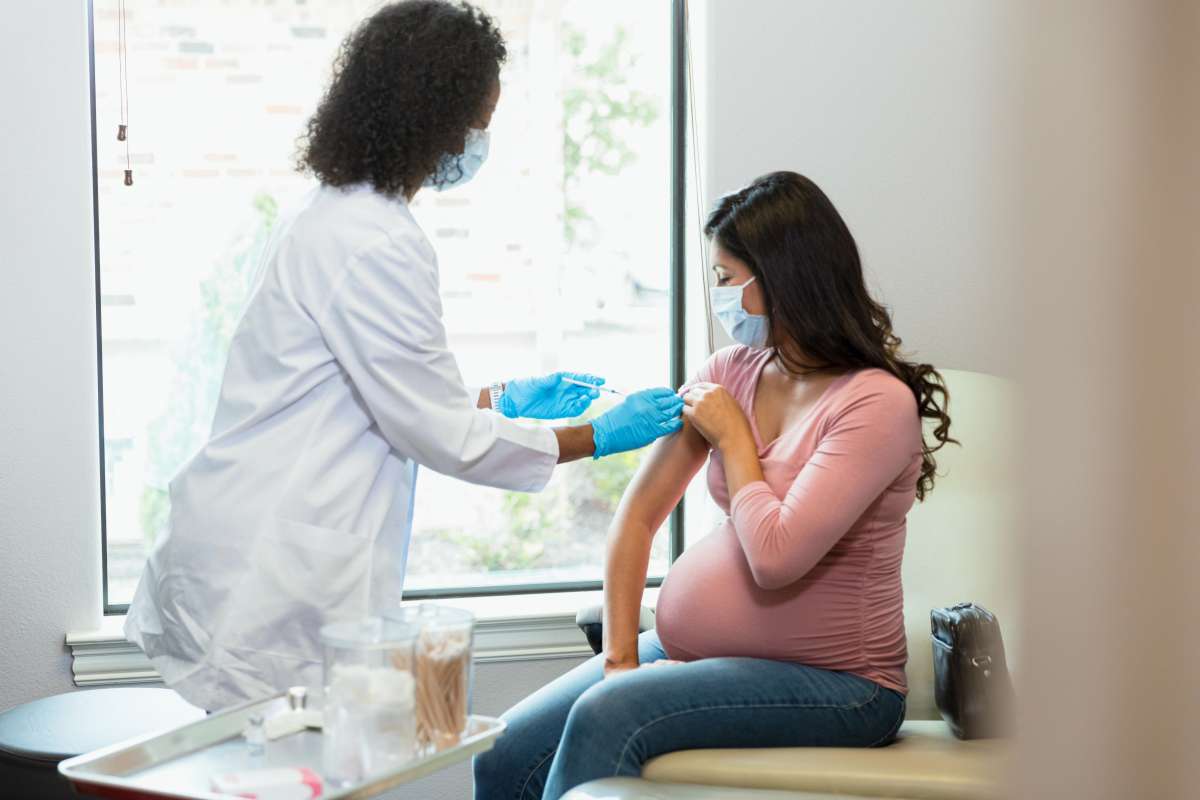Maternal infections during labor represent a significant concern in the world of maternal and neonatal healthcare. The process of childbirth is a transformative and vulnerable time for both the mother and the newborn. Also, the risk of maternal infections during labor can have severe implications for their health. These infections can occur due to various factors, including certain bacteria or viruses, prolonged labor, the rupture of membranes, or medical interventions such as cesarean sections. In this article, we will be addressing infections during labor. We will also look into the types of infections, causes, signs, and importance of treatment to ensure the well-being of both mother and baby.
Maternal infections during labor can manifest in different forms. This includes urinary tract infections, group B Streptococcus (GBS) infections, or chorioamnionitis, a disease of the fetal membranes and amniotic fluid. These infections pose serious health risks, including the potential for preterm birth, neonatal sepsis, and other complications that can impact the newborn’s immediate and long-term health. It is essential for doctors to monitor maternal health, administer preventive measures, and treat infections to minimize the risks and ensure a safer childbirth.
1. Introduction to Maternal Infections During Labor
a. The Prevalence and Impact
Maternal infections during labor are a significant concern affecting maternal and neonatal health. These infections, arising from various sources, can lead to complications, emphasizing the need for comprehensive awareness and preventative measures.
b. Recognizing the Importance of Prenatal Care

A crucial element in addressing maternal infections during labor is early and consistent prenatal care. Regular check-ups can help detect and manage potential infections, safeguarding the mother and the unborn child from preventable risks.
Also read: The Role Of Prenatal Visits And Tests: What To Expect At The Doctor’s?
2. Types and Causes of Maternal Infections
a. Bacterial Infections and Their Sources
Understanding the types of infections is essential. Bacterial diseases, such as Group B Streptococcus (GBS) or urinary tract infections, can pose serious threats. Identifying their sources, such as unhygienic or pre-existing conditions, is key to prevention.
b. Viral Infections and Their Transmission

Viral infections like herpes or hepatitis can complicate labor. Recognizing modes of transmission, including sexual contact or blood exposure, enables doctors to implement preventive measures, reducing the risk of maternal infections during labor.
Also read: The Impact Of Sexually Transmitted Infections On Fertility
3. The Impact on Maternal and Neonatal Health
a. Immediate Complications for the Mother
Maternal infections during labor can lead to immediate complications for the mother, ranging from fever and sepsis to increased risk during cesarean sections. Timely identification and intervention are critical to minimizing the impact on maternal health.
b. Neonatal Consequences and Long-Term Effects

The repercussions extend to the newborn, with potential consequences such as sepsis or respiratory distress. Moreover, maternal infections during labor may have long-term effects on the child’s health, emphasizing the importance of comprehensive care.
4. Prevention Strategies and Antenatal Practices
a. Antenatal Screening for Infections
Proactive antenatal screening is a cornerstone of prevention. Regular testing for common infections allows doctors to implement targeted interventions, reducing the risk of maternal infections during labor and ensuring a safer birthing process.
b. Antibiotic Prophylaxis and Vaccinations

In cases like GBS, antibiotic prophylaxis during labor can significantly reduce the risk of transmission to the newborn. Ensuring mothers are up-to-date on vaccinations against preventable infections is a crucial preventative measure.
5. Hygiene Practices: Addressing Infections During Labor
a. Maintaining Sterile Environments
Hygiene practices during labor and delivery are significant in preventing maternal infections. Maintaining sterile environments, including proper hand hygiene and sanitization of medical equipment, is essential to minimize the risk of infections.
b. Cesarean Sections and Infection Risk

While cesarean sections are sometimes necessary, they come with an increased risk of infection. Understanding this risk prompts doctors to exercise caution, employing rigorous infection control measures during and after the procedure.
Also read: Birthing Choices: Preparing For The Possibility Of Cesarean
6. Psychological and Emotional Impacts on Mothers
a. Coping with the Emotional Toll
Maternal infections during labor can take a toll on a mother’s mental health. Coping with the emotional aftermath, including feelings of guilt or anxiety, is an important aspect of postpartum care that should be addressed with sensitivity and support.
b. Support Systems and Mental Health Care

Establishing strong support systems and including mental health care into postpartum protocols are essential. Recognizing and addressing the psychological impact of maternal infections during labor contributes to overall maternal well-being.
7. Addressing Infections During Labor: Postpartum Care and Monitoring
a. Vigilant Postpartum Monitoring
After childbirth, careful monitoring for signs of infection is crucial. Early detection allows for quick intervention, preventing the escalation of potential complications. Postpartum care should include regular check-ups to ensure the mother’s continued well-being.
Also read: Welcoming Your Baby: Immediate Postpartum Care And Recovery
b. Educating Mothers for Self-Care

Empowering mothers with knowledge about postpartum self-care is key. Educating them on recognizing symptoms, seeking timely medical attention, and adhering to prescribed postpartum care routines enhances their active role in ensuring a healthy recovery.
Understanding and addressing infections during labor requires a multi-faceted approach. From proactive prenatal care to careful postpartum monitoring, each step plays an important role in safeguarding the health of both mother and child. By prioritizing prevention, promoting hygiene practices, and addressing the emotional impact, healthcare systems can contribute to a safer and more supportive birthing experience. Maternal infections during labor should be viewed not only as medical challenges but as issues demanding comprehensive care that integrates physical, emotional, and psychological well-being.
